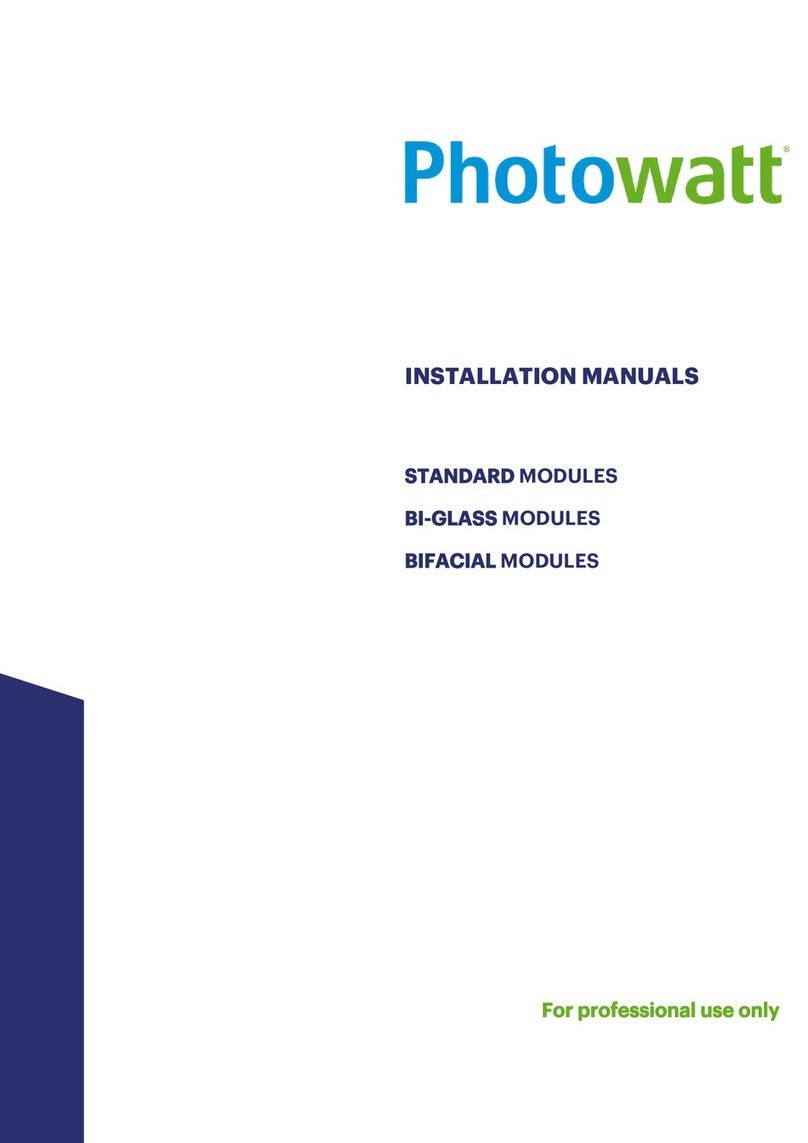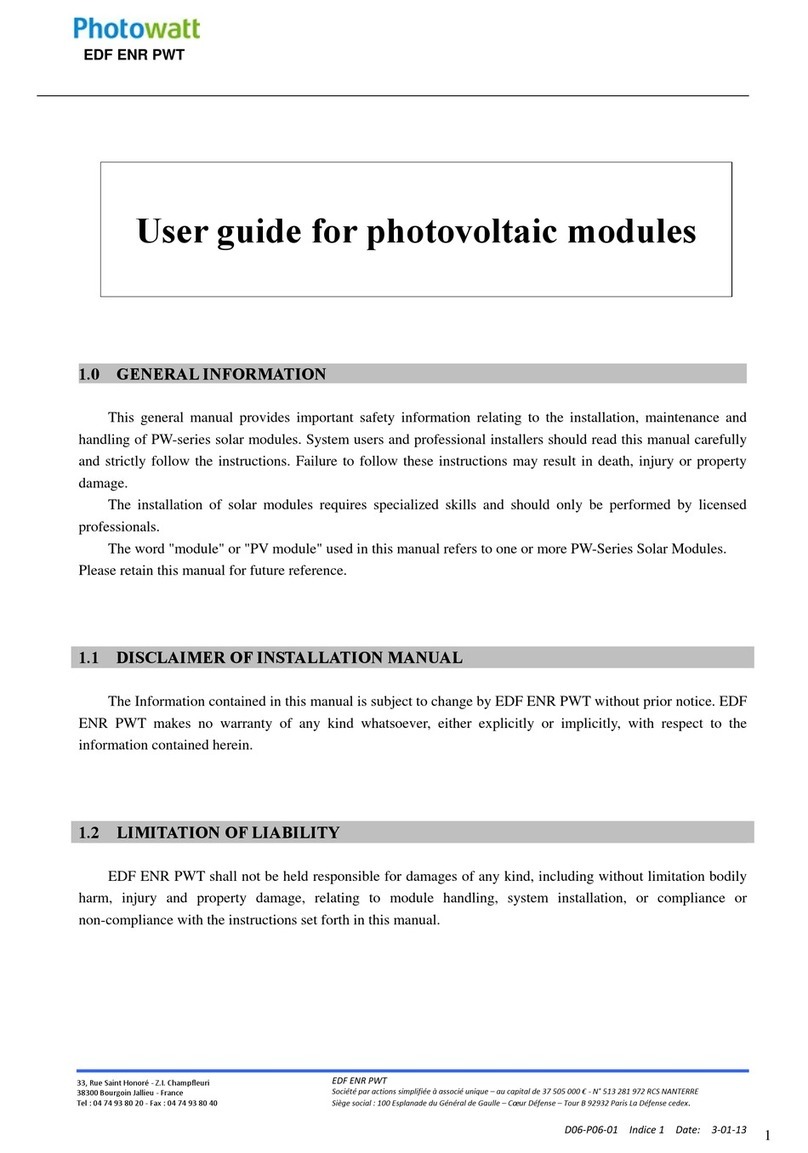
EDF ENR PWT
33,RueSaintHonoré‐Z.I.Champfleuri
38300BourgoinJallieu‐France
Tel:33474938020‐Fax:33474938040
EDFENRPWT
Sociétéparactionssimplifiéeàassociéunique–aucapitalde37505000€‐N°513281972RCS
NANTERRE
Siègesocial:100EsplanadeduGénéraldeGaulle–CœurDéfense–TourB92932ParisLaDéfensecedex.
D07-P06-01 GB Indice 1 Date : 3-01-13
5.1 MODULE WIRING
Correct wiring scheme
When designing the system, avoid forming loops (to minimize risk in the event of an indirect lighting
strike). Make sure that wiring is correct before starting up the system. If the measured open circuit voltage
(Voc) and short-circuit current (Isc) differ from the specifications, then there is a wiring fault.
Correct connection of plug connectors
Make sure that the connection is safe and tight. The plug connector should not receive outer stress. The
connector should only be used to connect the circuit. It should never be used to turn the circuit on and off.
Use of suitable materials
Use special solar cable and suitable plugs only (wiring should be placed in conduit that is sunlight-resistant
or, if exposed, should be sunlight-resistant) in accordance with local fire, building and electrical code.
Ensure that they are in perfect electrical and mechanical condition.
The permitted type of solar cable is single conductor cable listed and labeled as USE-2 or PV Wire, 90°C
wet rated, with proper insulation to withstand the maximum possible system open-circuit voltage. The
conductor material should use copper only. Select a suitable conductor gauge to minimize voltage drop and
ensure conductor ampacity complies with local regulations (such as NEC 690.8(D)).
Cable protection
Secure the cables to the mounting system using UV-resistant cable ties. Protect exposed cables from damage
with appropriate precautions (e.g. locate them within plastic conduit). Avoid exposure to the direct sunlight.
5.2 GROUNDING
A module with exposed conductive parts is considered to be in compliance with U1703 only when it is
electrically grounded in accordance with the instructions presented below and the requirements of the
National Electrical Code.
Although the modules are certified to safety class II, it is required that they be grounded. And the module
installation complies with all local electrical codes and regulations.
The earth grounding connection should be made by a qualified electrician.
Connect module frames to each other using suitable grounding conductor. Holes provided for this purpose
are identified with a grounding symbol.
Use 6-12 AWG (4-14 mm2) copper wire only. The bolts, nuts, flat washers, lock washers or other relevant
hardware should be made of stainless steel, unless otherwise specified.
Where common grounding hardware (nuts, bolts, star washers, spilt-ring lock washers, flat washers and the
like) is used to attach a listed grounding/bonding device, the attachment must be made in conformance with
the grounding device manufacturer’s instructions.
Common hardware items such as nuts, bolts, star washers, lock washers and the like have not been
evaluated for electrical conductivity or for use as grounding devices and should be used only for
maintaining mechanical connections and holding electrical grounding devices in the proper position for
electrical conductivity. Such devices, where supplied with the module and evaluated through the































